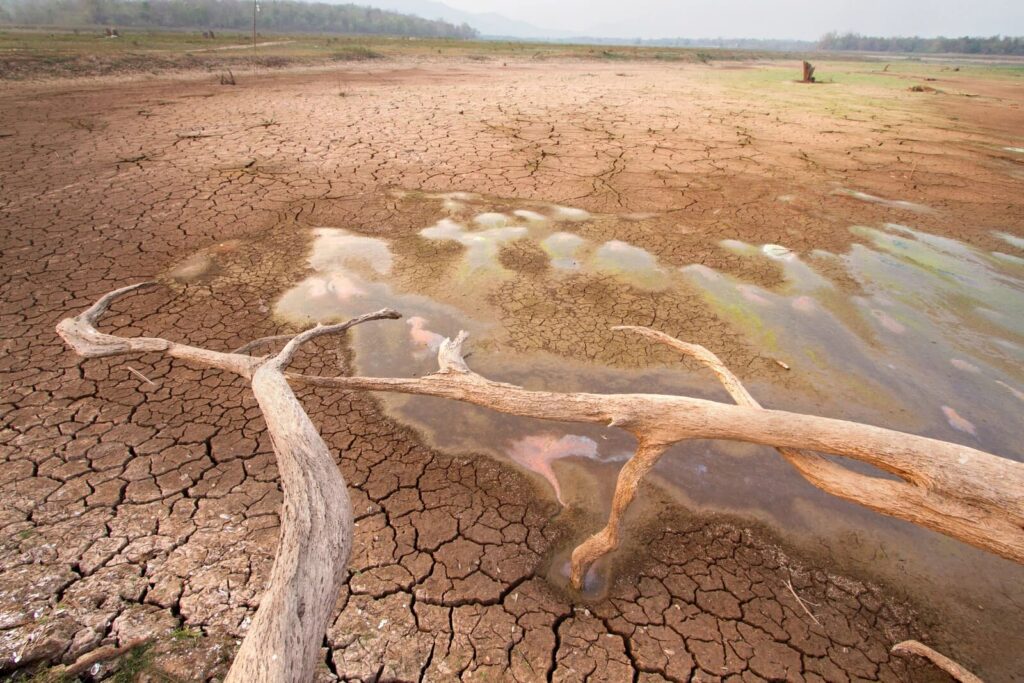This article is part of:United Nations Climate Change Conference COP28
- The climate finance gap poses a significant threat to Africa’s ability to adapt, mitigate, and build resilience against climate change.
- The climate crisis demands a transformative and innovative approach – beyond the traditional avenues of financing.
- We outline the role of African and global leaders in championing a multi-faceted strategy that requires commitment and decisive action.
As the world converges for COP28, Africa stands at a critical juncture in its fight against climate change. At COP27, the resounding call echoed across the continent and beyond: bridging the climate finance gap is not just a priority; it is an existential necessity. The figures are staggering: the Climate Policy Initiative projects need $2.8 trillion from 2020 to 2030. Given the limited climate finance flows to Africa, the continent is left with a gap between $200-400 billion dollars per year by 2030 according to ECPDM.
This climate finance gap poses an imminent threat to Africa’s ability to adapt, mitigate, and build resilience against the adverse impacts of climate change. The urgency of the matter demands a transformative and innovative approach, one that goes beyond the traditional avenues of financing, and renewed global climate change action for fragile and developing countries. African and global leaders must champion a multi-faceted strategy that leverages innovative financial instruments, enhances the role of the private sector, harnesses emerging technologies, and secures substantial climate financial commitments from the world’s largest polluters.
Traditional financial instruments have played a role, but they fall woefully short of meeting the astronomical financing needs. To bridge the gap, African leaders must embrace innovation and disruption in their financial strategies. Effective greenhouse gas trading systems, green bonds, green loans, sustainability-linked bonds, sustainability-linked loans, efficient carbon markets, debt-for-climate swaps, and forward looking domestic resource mobilization instruments should be at the forefront of this financial revolution.
Greenhouse gas trading systems have proven successful in incentivizing emissions reductions. By establishing a market where entities can buy and sell emission allowances, African nations can stimulate a race to the top in environmental stewardship. This not only reduces emissions but also generates revenue that can be reinvested in climate resilience projects.
Green bonds and loans represent another avenue to raise funds sustainably. By earmarking these funds for environmentally friendly projects, African nations can attract socially responsible investors. These financial instruments align the interests of investors with the continent’s climate goals, creating a win-win scenario for all stakeholders.
Sustainability-linked bonds and loans introduce an innovative twist, tying financial incentives to the achievement of predetermined sustainability targets. These instruments not only raise funds but also ensure accountability in the pursuit of climate objectives.
Efficient carbon markets, when properly designed, can provide a flexible and cost-effective approach to reducing emissions. African nations can explore the potential of carbon markets to incentivize emission reductions and attract investments in cleaner technologies. This year, United Arab Emirates investors committed acquiring $450 million of carbon credits from the Africa Carbon Markets Initiative (ACMI), during the inaugural Africa Climate Summit organized by Kenyan President William Ruto.
Debt-for-climate swaps present an opportunity to restructure existing debts in exchange for climate action commitments. This novel approach allows African nations to alleviate debt burdens while channeling resources toward climate-resilient projects. Germany committed $65 million debt swap with Kenya during the inaugural Africa Climate Summit. As highlighted by Chetan Hebbale and Johannes Urpelainen (see Figure 2 below), many of the most climate vulnerable countries are also in high debt distress, and swapping can provide much needed resources to address climate challenges.
Forward looking domestic resource mobilization instruments tap into the continent’s internal financial capacities. By enhancing revenue generation through progressive taxation and other fiscal policies, African nations can supplement external financing and exert greater control over their climate finance destinies.
Role of the private sector
While traditional funding sources remain essential, the private sector represents an untapped reservoir of capital and expertise in Africa, only representing 14% compared to 96% for Canada (see Figure 10 below). Drastically expanding its role in climate finance is fundamental. Public-private partnerships, green investments, and sustainable business practices must become the norm.
Engaging the private sector in climate-resilient projects can unlock significant financial resources. By aligning financial incentives with sustainability goals, African nations can attract private enterprises to invest in projects that not only mitigate climate change but also foster economic growth.
Public-private partnerships, characterized by shared risks and rewards, can leverage the strengths of both sectors. These collaborations can fast-track the implementation of climate projects, ensuring efficiency and effectiveness in resource utilization.
Sustainable business practices, driven by corporate responsibility and environmental stewardship, can further augment the private sector’s role. African leaders must incentivize businesses to adopt green technologies, reduce emissions, and integrate climate considerations into their operations.
Capitalizing on emerging technologies
In the digital age, emerging technologies offer unparalleled opportunities to transform Africa and revolutionize climate finance. Fintech solutions, blockchain technology, and other innovations can enhance transparency, efficiency, and security in financial transactions related to climate projects.
Fintech solutions can streamline financial processes, reduce transaction costs, and increase the speed of fund disbursement. Mobile banking, digital wallets, and other fintech innovations can enhance financial inclusion, ensuring that climate finance reaches even the most remote communities.
Blockchain technology, with its decentralized and transparent nature, can provide a secure platform for tracking climate finance flows. Smart contracts on the blockchain can automate the verification and disbursement of funds based on predefined criteria, reducing the risk of fraud and mismanagement.
Incorporating these technologies into the climate finance landscape requires strategic partnerships between governments, financial institutions, and tech innovators. African leaders must foster an environment conducive to technological innovation, ensuring that the benefits of these advancements are harnessed for the continent’s sustainable development.
To see the complete report: WEF

